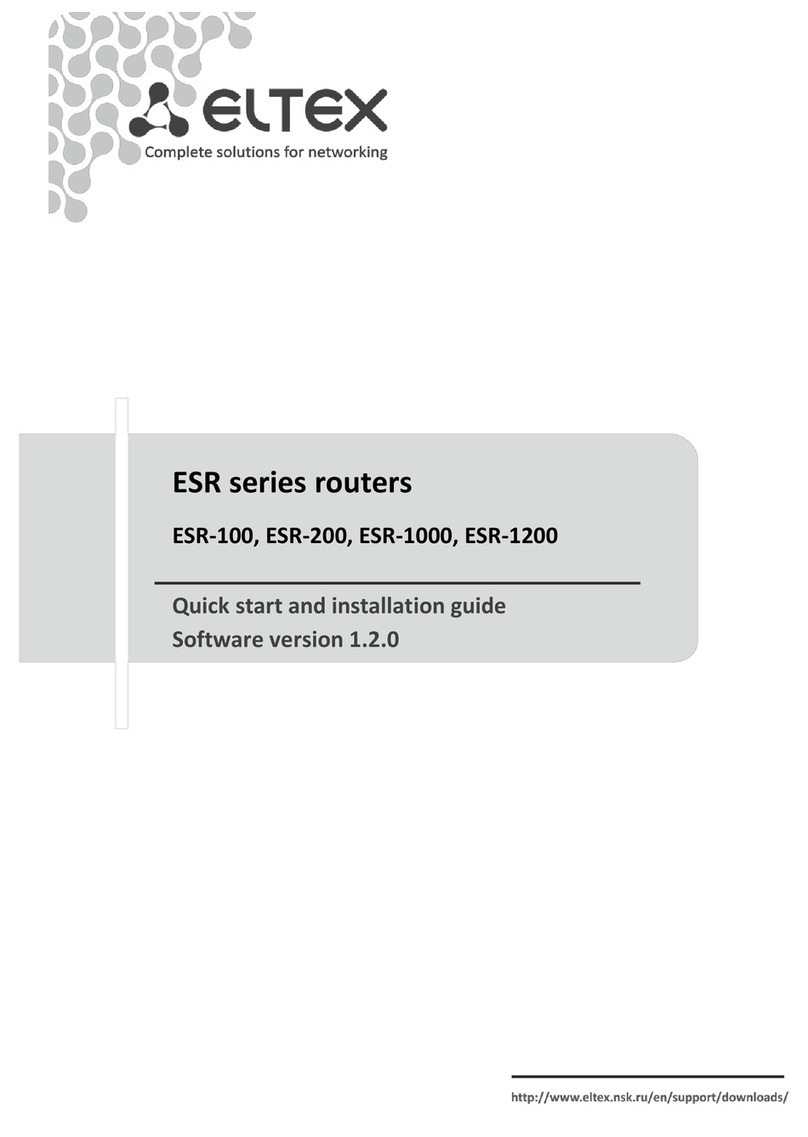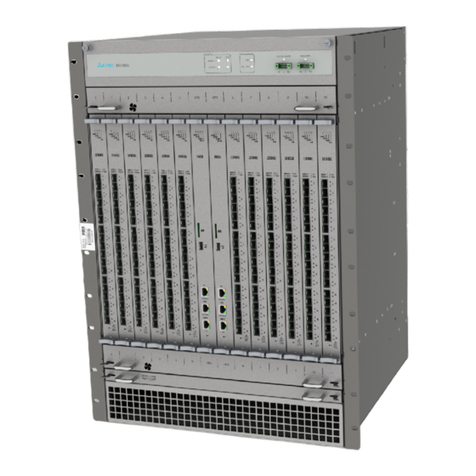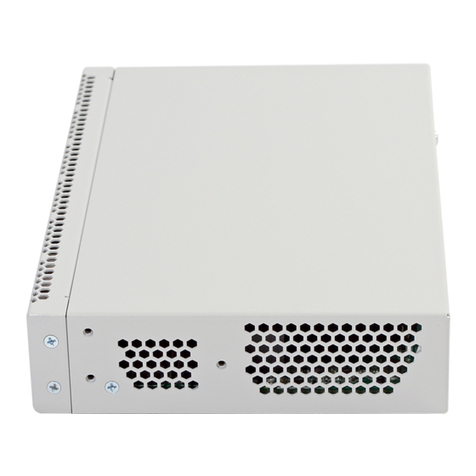4ESR Series Routers Operation Manual
CONTENTS
1 INTRODUCTION .......................................................................................................................................... 6
1.1 Abstract............................................................................................................................................... 6
1.2 Target Audience.................................................................................................................................. 6
1.3 Symbols............................................................................................................................................... 6
2 PRODUCT DESCRIPTION ............................................................................................................................. 7
2.1 Purpose............................................................................................................................................... 7
2.2 Functions............................................................................................................................................. 7
2.2.1 Interface functions.................................................................................................................... 7
2.2.2 Functions for MAC address processing..................................................................................... 8
2.2.3 Second-layer functions of OSI model........................................................................................ 8
2.2.4 Third-layer functions of OSI model ........................................................................................... 9
2.2.5 Traffic tunnelling functions..................................................................................................... 10
2.2.6 Management and configuration functions ............................................................................. 10
2.2.7 Network security functions..................................................................................................... 11
2.3 Main specifications ........................................................................................................................... 11
2.4 Design ............................................................................................................................................... 13
2.4.1 ESR-1000, ESR-1200 design..................................................................................................... 13
2.4.2 ESR-100, ESR-200 design......................................................................................................... 16
2.4.3 Light Indication ....................................................................................................................... 18
2.5 Delivery Package............................................................................................................................... 20
3 INSTALLATION AND CONNECTION ........................................................................................................... 22
3.1 Support brackets mounting .............................................................................................................. 22
3.2 Device rack installation..................................................................................................................... 23
3.3 ESR-1000, ESR-1200 power module installation .............................................................................. 24
3.4 Connection to Power Supply ............................................................................................................ 24
3.5 SFP transceiver installation and removal ......................................................................................... 25
4 MANAGEMENT INTERFACES .................................................................................................................... 26
4.1 Command line interface (CLI) ........................................................................................................... 26
5 INITIAL ROUTER CONFIGURATION ........................................................................................................... 27
5.1 ESR router factory settings ............................................................................................................... 27
5.2 Router connection and configuration............................................................................................... 28
5.2.1 Connection to the router ........................................................................................................ 28
5.2.2 Basic router configuration ...................................................................................................... 29
6 FIRMWARE UPDATE ................................................................................................................................. 33
6.1 Updating firmware via system resources ......................................................................................... 33
6.2 Updating firmware via bootloader ................................................................................................... 34
6.3 Secondary bootloader update (U-Boot) ........................................................................................... 35
7 ROUTER CONFIGURATION EXAMPLES...................................................................................................... 37
7.1 VLAN Configuration .......................................................................................................................... 37
7.2 QinQ termination configuration ....................................................................................................... 39
7.3 AAA configuration............................................................................................................................. 39
7.4 Command privilege configuration .................................................................................................... 40
7.5 DHCP server configuration ............................................................................................................... 41
7.6 Destination NAT configuration ......................................................................................................... 43
7.7 Source NAT configuration................................................................................................................. 45
7.8 Firewall configuration....................................................................................................................... 48
7.9 Access list (ACL) configuration.......................................................................................................... 50
7.10 Static routes configuration ............................................................................................................... 51
7.11 MLPP configuration .......................................................................................................................... 53
7.12 Bridge configuration ......................................................................................................................... 54
7.13 RIP configuration .............................................................................................................................. 56
7.14 OSPF configuration ........................................................................................................................... 57
7.15 BGP configuration............................................................................................................................. 60


































